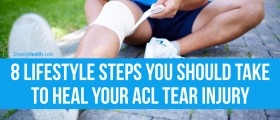Groin Pull - Overview
A groin pull is a type of injury that features with sprain and damage to the adductor muscles located in the inner thigh. This injury commonly affects athletes, and the damage may result from overstretching of the muscles. This particular region of a thigh contains 6 muscles and they spread from the inner part of the thigh bone to the inner pelvis. In case these muscles are overstretched a pulled groin occurs.
The injury is rather painful and it features with excruciating burning sensation in the inner thigh region. The injury is classified into three grades. In grade I groin pull there is a mild strain accompanied by very little pain. Grade II groin pull features with noticeable swelling and bruising of the injured area. This leads to more intense pain and discomfort, and the person simply cannot perform activities such as jumping or running.
And finally, grade III groin pull is accompanied by severe pain, swelling, and bruising. The injured person is not capable of performing any kind of physical activity.

Pulled Groin Recovery
The injury requires examination by a well-experienced doctor. The doctor will recommend suitable treatment and design the most appropriate recovery program. All injured patients need to cease any kind of strenuous activity which will cause further damage to the injured area. This is one of the most difficult injuries to rehab.
The cornerstone of the treatment for pull groin includes a heating pad, ice packs, and pain-relieving medications. Painkillers are usually prescribed by a doctor after the definitive diagnosis has been set. These medications are also available over-the-counter.
Treatment and rehabilitation start with proper amount of rest. Rest is considered the best cure for a pulled groin. Athletes are particularly due to avoid intensive activities. Ice packs are supposed to be applied to the injured area in the first couple of days. They are held for approximately 20 minutes several times a day.
After the first few days and when the therapy with ice packs is finished, the injured area is treated with a heating pad. The pad is held for approximately 45 minutes and is repeated every 4 to 6 hours. Gentle stretching of the injured muscle is allowed once or twice each day. The stretching must not be accompanied by pain and if the pain occurs one should stop stretching immediately. Any kind of strenuous activities is forbidden until the groin area has completely healed.
All the previously mentioned measures are highly effective and stimulate recovery since they increase circulation of the injured groin, reduce swelling, and remove toxins from the site of injury.
- GPI is an umbrella concept that includes distinct pathological processes (potentially overlapping) and multifactorial causes, making interpretation of the literature complex. The lack of agreement on definitions and terminology of GPI as well as the various definitions of what constitutes a sports injury challenge our ability to interpret the findings.
- A poor adductor flexibility has been previously associated with groin pain and injury. Stretching has therefore been hypothesized to aid in recovery from GPI, despite lacking a clear cause–effect relationship. The proposed mechanisms through which stretching may alleviate GPI symptoms and accelerate recovery include improvements in hip joint range of motion (ROM) and reduction in muscle stiffness.
- Recent systematic reviews showed that stretching is commonly used as an adjunct to multimodal exercise and/or therapy programs prescribed for GPI recovery/improvement. A randomized study with 48 athletes with GPI showed that an exercise therapy program including stretching provided a faster time to return to full sports participation than an exercise-based program not including stretching (consisting of aerobic, strength, and balance drills), but the authors stated that neither treatment was particularly effective, with only 50–55% of the athletes in both groups making a full return to sports.
- The Preferred Reporting Items for Systematic Reviews and Meta-Analyses Protocols (PRISMA) guidelines were followed, as well as the AMSTAR 2 recommendations, to assist in structuring this systematic review. Where possible, we updated the structure to better conform to the recently updated PRISMA 2020 guidelines. We planned to use The Grading of Recommendations Assessment, Development, and Evaluation (GRADE) to assess the quality of studies.
- Articles were eligible if published in peer-reviewed journals, regardless of language or date. Following the pre-established rationale, only RCTs were included to reduce risk of bias, to balance participants across groups, and avoid systematic differences between the groups in terms of confounders. Included RCTs could use a cluster, parallel, or crossover design.
- Using the GRADE framework, RCTs were initially graded as high quality, potentially downgraded on the basis of five dimensions. Risk of bias, inconsistency (i.e., heterogeneity), and publication bias were addressed above. Indirectness and imprecision (through 95% CIs) were also assessed. JA, DMG, and HF independently assessed overall quality of the studies and confidence in evidence.
- The automated search returned 117 results (CINAHL: 16; Cochrane Library: 10; EBSCO: 12; EMBASE: 27; PEDro: 0; PubMed: 13; Scielo: 0; Scopus: 0; SPORTDiscus: 13; Web of Science: 26), reduced to 52 after removal of duplicates. Screening of title and abstract resulted in the exclusion of 49 records: 21 did not fit the type of study (e.g., reviews, essays), 14 were out of scope, and 14 failed to comply with one or more PICOS criteria. Three studies were eligible for full-text analysis, all of which were excluded due to the following reasons: (i) in one study, the participants did not have groin pain, and the primary outcomes defined in our review were not available; further, both intervention and comparator were stretching-based; (ii) in two studies, stretching was not the only differentiating factor between the groups.

















Your thoughts on this
Loading...